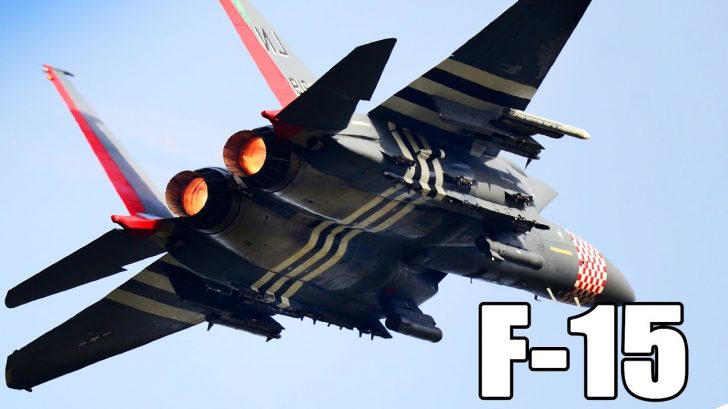Built by McDonnell Douglas in the early 1970s, the F-15 Eagle can reach Mach 2.5 while flying over 65,000 feet and is still considered one of the most powerful fighter jets in the world today. Here’s how the Eagle’s story started:
History
Its story starts in the 60s, following the F-4’s poor combat performance during the Vietnam War and the unveiling of the new Soviet MiG-25. These events prompted the USAF to launch the “F-X Program” in September 1968. Its goal was to design an aircraft that favored maneuverability over speed and ground-attack capability above all else. The McDonnell Douglas Company was chosen to design and produce this future aircraft.
The first F-15 prototype left the factory on June 26, 1972. Like the F-4, the F-15 had two air intakes on the side and two powerful engines. It flew for the first time on July 27 that year and quickly showed excellent performance, proving its superiority over other US aircraft.
Design
The F-15’s cockpit was designed to give perfect visibility to the pilot – especially during close air combat. To enhance its maneuverability, the F-15’s engines were supplied with air by two variable-geometry air intakes that could rotate to follow the fighter’s angle of attack.
Furthermore, the fighter jet is powered by two Pratt & Whitney F-100 turbojets, similar to the one found in the F-16. These engines allow the F-15 to take off in shorter distances but also provide enough power to exceed Mach 2 at high altitudes. To slow down, the F-15 comes equipped with a large air brake behind the cockpit to quickly create a strong resistance to the air.
Cold War Use
The emergence of enemy satellites highlighted the need to destroy these satellites if required. In the late ‘70s, the US developed the anti-satellite ASM-135 missile to be launched from an F-15.
F-15As were modified to carry one missile on their centerline station. The Eagle would then execute a Mach 1.22, 3.8 g climb at 65° to release the ASM-135 at an altitude of 38,100 feet.
A total of five test launches were done during the whole program. However, USAF Major Wilbert Pearson was the only pilot to destroy a satellite using his F-15A.
Armament
F-15s have been equipped with the famous M61 Vulcan since its creation. This outstanding gun fires 20mm rounds at an extremely high rate of around 6,000 rounds per minute.
Nine hardpoints can also be found within the Eagle: two under-wing, four under-fuselage, a single centerline pylon station, and extra fuselage pylons for fuel tanks. In total, the F-15 can carry up to 16,000 lbs of ordnance, usually Sparrows, Sidewinders, and AMRAAMs.
The Future
The last F-15A model was retired on September 16, 2009, marking the end of service for all A and B models in the US. Eight years later, the USAF announced its plan to retire the C and D models in the mid-2020s. In 2021, it was found that the average age of the C and D’s airframe was 37 years!
So far, the Air Force seems to be sticking with the F-15E Strike Eagle variant since its air-to-ground role and the fairly new airframe suits the USAF’s needs.



